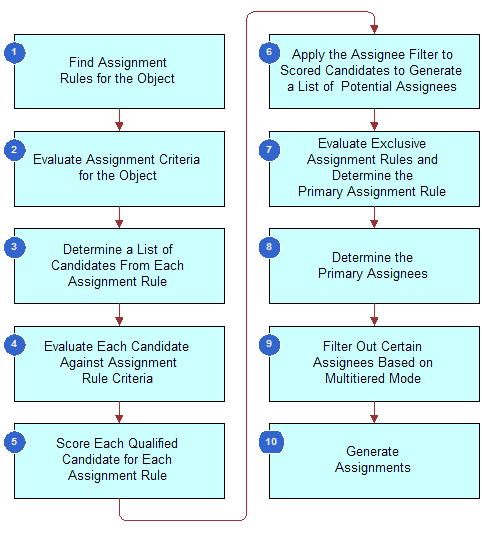Assignment Methodology and Examples for Creating Assignment Rules
It is strongly recommended that you have a good understanding of how Siebel Assignment Manager evaluates candidates and determines assignments before you begin creating your assignment rules, or configure, administer, or use the various assignment features.
This topic explains assignment methodology and provides examples for creating different kinds of assignment rules. You may, however, use these features differently, depending on your business model. The topics are:
Example of Creating Sales Assignment Rules Based on Sales Territories
An example of how a sales organization can strategically assign salespeople based on territories.
Example of Creating Sales Assignment Rules That Combine Criteria
An example of how a sales organization can distribute its salespeople in the same geographic location based on revenue potential.
Example of Creating Assignment Rules for Service Organizations
An example of how to create assignment rules for a service organization.
The following figure provides a high-level flowchart of Assignment Manager behavior, which includes the following steps:
Find assignment rules for the object.
Evaluate assignment criteria for the object.
Determine a list of candidates from each assignment rule.
Evaluate each candidate against assignment rule criteria.
Score each qualified candidate for each assignment rule.
Apply the assignee filter to scored candidates to generate a list of potential assignees.
Evaluate exclusive assignment rules and determine the primary assignment rule.
Determine the primary assignees.
Filter out certain assignees based on multitiered mode.
Generate assignments.
